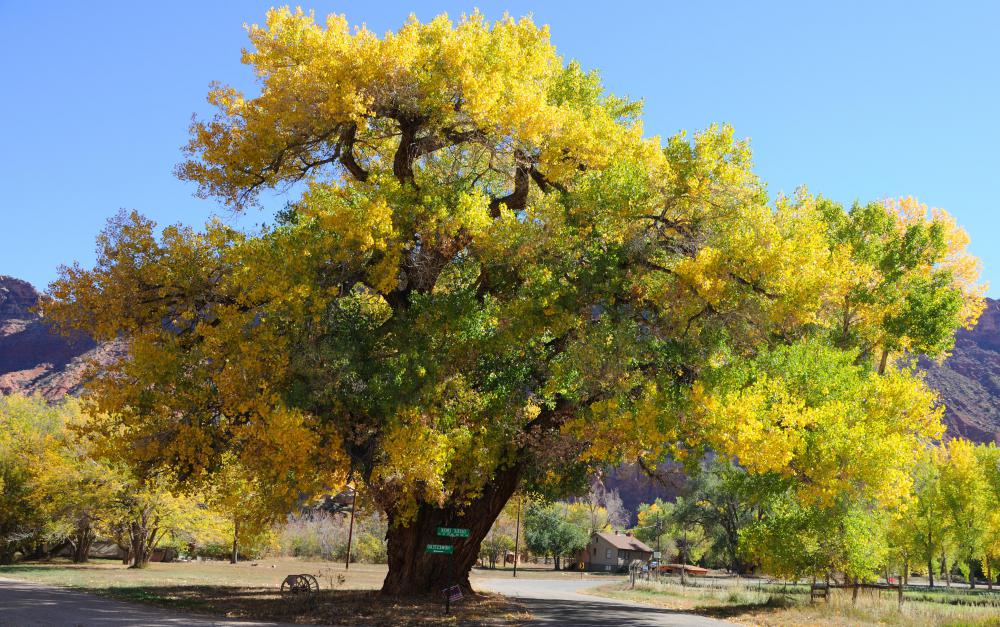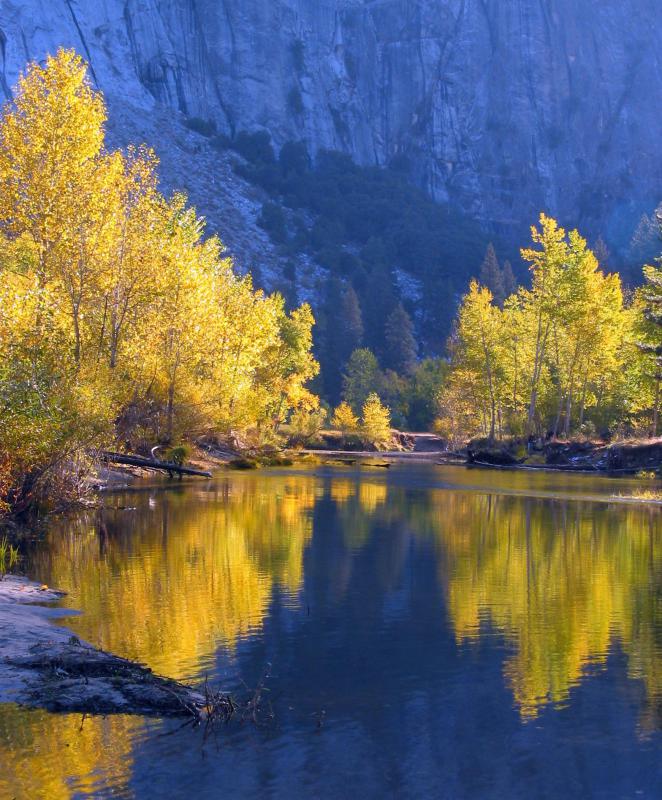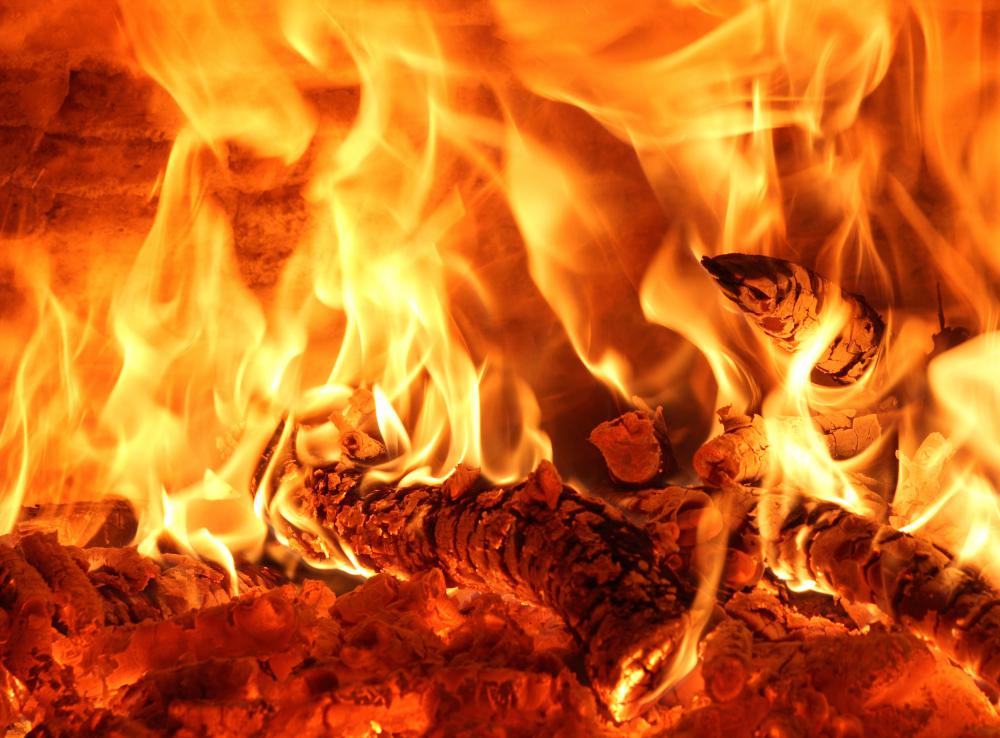At HomeQuestionsAnswered, we're committed to delivering accurate, trustworthy information. Our expert-authored content is rigorously fact-checked and sourced from credible authorities. Discover how we uphold the highest standards in providing you with reliable knowledge.
What is a Cottonwood Tree?
A cottonwood tree is a tree in the genus Populus. Three species of cottonwood tree are recognized in this genus, and these northern hemisphere natives can be found in a range of locations. Most commonly, cottonwoods are located in riparian zones near rivers and lakes, and they are sometimes used as an indicator species when people look for underground deposits of water. Cottonwoods are also grown as ornamentals, and some garden supply stores carry cottonwood seedlings for gardeners.
Several features can be used to identify a cottonwood tree. The first is that, like other poplars, cottonwoods have leaves which appear to shimmer and shake in the wind, creating a very distinctive sound and visual appearance. Cottonwood leaves are triangular to diamond-like in shape, and they are a bright green on both sides, turning yellow and dropping in the fall and winter. The bark of cottonwoods is gray, and it tends to be deeply ridged and grooved. Cottonwoods produce hairy encapsulated fruit in dangling chains in the fall.

Although cottonwoods tend to prefer riparian zones, these trees are not terribly picky. They can withstand very unpleasant environmental conditions, including frequent flooding, silt deposits, and poor soils. Some taller trees bear scars where they have been struck by lightning, illustrating the durability of these trees. The toughness of the cottonwood tree has made it a popular choice for landscaping in urban areas and along highways and roads.

The wood from cottonwood trees is very soft and easy to work with, making it popular with carvers. Cottonwood has also historically been used as a source of timber for various construction projects, and as a source of firewood. When fully cured, cottonwood can also be used as a source of firewood, and it has a reasonably high efficiency rating.
These graceful trees can also make very pleasant ornamentals. A stand of cottonwoods can be used to create a privacy barrier between two properties, with leaves which will shimmer and dance with the breeze, adding visual interest. Cottonwoods can also be grown as standalone trees in the garden. Among the ornamental deciduous trees, cottonwoods are very popular in some regions of the world. When planting a cottonwood tree, gardeners should think about how the tree will impact the garden as it grows. These trees can grow very tall, casting a formidable shadow, and they can also develop large roots which damage pools, walkways, and foundations.
AS FEATURED ON:
AS FEATURED ON:














Discussion Comments
My neighbor has planted several of these trees which fit the description, but they are only three or four years old. Some of them are nearly 20 feet high.
What I want to know is about the root system. Could someone advise how far the roots travel and would they be likely to cause a problem in a small paved area? It is winter in Perth, Australia and that's the rainy season. The owner had a lot of water lying around on the paved area and it gradually seeped away. I live next to her, with our yards divided by a metal fence and I also have a small paved area, which I don't want inundated with her runoff. Could someone advise me, please?
Cottonwood trees were a great resource for early pioneers. It was helpful for them to find underground water sources,wood for shelters, homes barns and shade in summer and heat in the winter. As pioneers settled and became farmers, they later called the cottonwoods 75 foot weeds.
I really have a love/hate relationship with the cottonwood tree in my yard -- I love it because its gorgeous, and I get the best pictures off of it, but I hate it because the roots are really tearing up the rest of my yard, and the amount of fluff that that thing sheds every year is truly incredible.
I mean, you wouldn't think that one cottonwood tree could produce all that fluff, but good Lordy! I could fill ten duvets with all that stuff.
Unfortunately, I really don't have a good idea of that to do with it either @galen84basc -- I usually just end up putting it in my compost pile.
Let me know if you find out any good uses for it though! And great cottonwood tree information, by the way, wisegeek -- keep it up!
This may be kind of a silly question, but can you actually use the cottonwood tree cotton or fluff? I have an Eastern cottonwood tree my backyard, and I always end up with just gobs of the fluff sitting in my yard every year.
Is there something that I can actually use that stuff for, or do any companies use it that I could sell it to, or even give it to?
I just hate throwing all that stuff away if there's some use that it could be put to. And with all the fluff that it's got, you'd think that there would be some craft or something that it could be used for.
Do you have any ideas, or tips? And does anybody reading this have any clue as to what I could do with all that fluff?
Very interesting and accurate article. When I was growing up, my parents had some plains cottonwood trees out on our back 40, and my dad was always finding little pieces to carve on.
He was a big whittler; just liked to have something to do with his hands, but he was also quite a talented woodcarver. He never did it for a living, but I still have some of his pieces today, and people can't seem to get enough of them when they come over.
You're very right in saying that cottonwood is about the best carving wood there is. There's just something about the texture and consistency of the wood that feels good to the hand, and makes for a good, solid piece.
If you all do ever get the opportunity to get some cottonwood tree carvings, you should certainly take it -- carving cottonwood is a dying art, and it's only going to get harder to find a good piece.
Post your comments